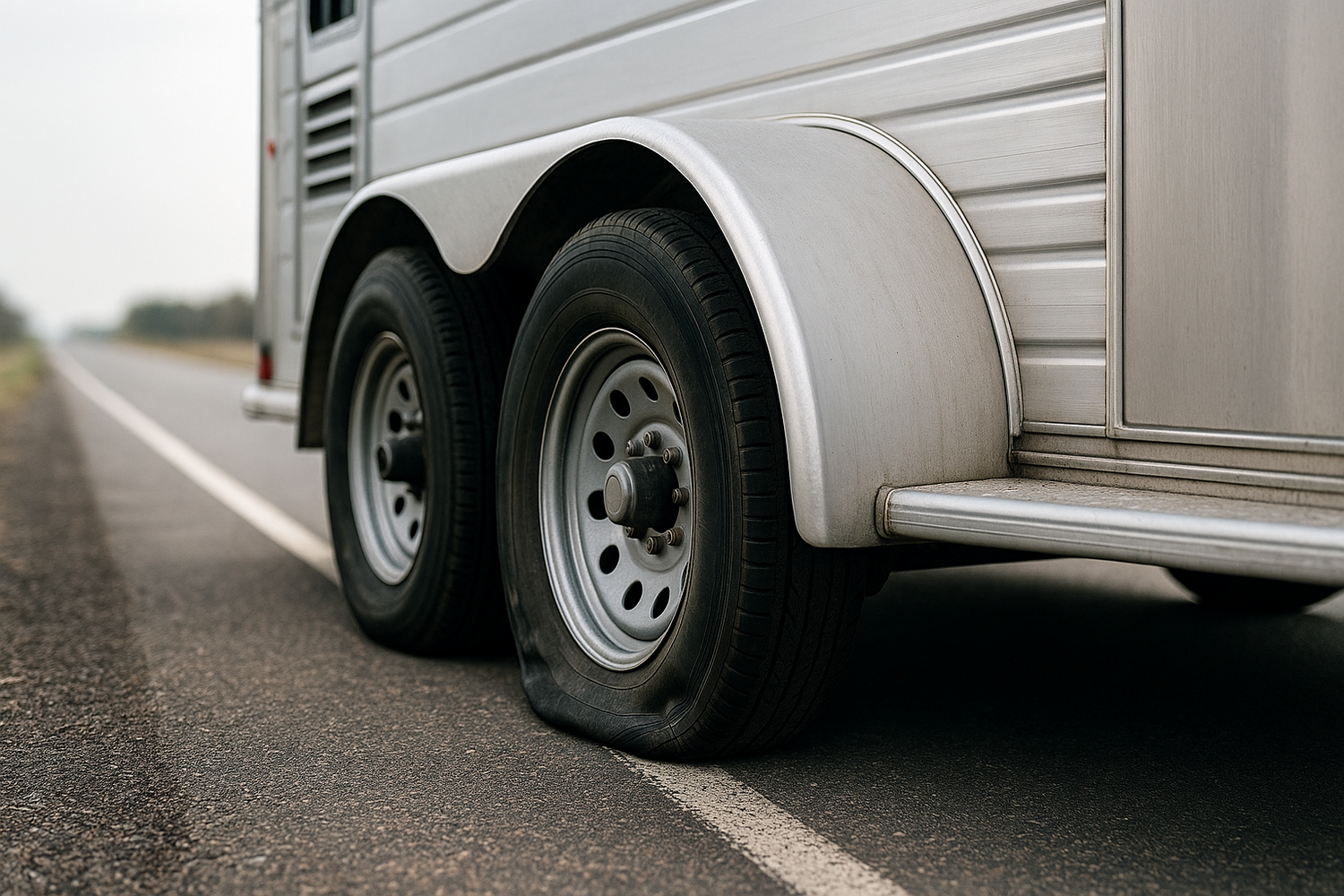In the realm of transportation, tire pressure is often an overlooked aspect of maintaining safety and efficiency on the road. The tractor trailer tire pressure monitoring system (TPMS) serves as a vital tool in ensuring that tire pressure is constantly monitored, helping to prevent blowouts and other tire-related failures. This system utilizes sensors placed in each tire to continuously measure the air pressure and temperature, relaying real-time data to the driver or fleet manager.
Understanding how these systems work can significantly enhance the performance and longevity of your trailers. Key components of a TPMS include:
- Sensors: Installed within the tire or on the valve stem, these devices detect pressure changes and send alerts if they fall outside of safe parameters.
- Receiver/Display Unit: This unit receives data from the sensors and displays it on a screen, allowing for easy monitoring of tire health.
- Alerts and Notifications: The system typically includes audible or visual alerts to notify the driver of any issues, ensuring timely action can be taken.
With a well-optimized tractor trailer tire pressure monitoring system, operators can reduce the risk of accidents, improve fuel efficiency, and extend tire life. Tow with peace of mind, knowing that trailerwatchdog is standing guard. For more information on how we can help turn your trailer into a smart trailer, visit trailerwatchdog.com.
Benefits of Monitoring Tire Pressure in Trailers

Monitoring tire pressure in trailers is not just a matter of routine maintenance; it offers a multitude of benefits that can significantly impact safety, efficiency, and cost-effectiveness. These advantages can be categorized as follows:
- Enhanced Safety: Proper tire pressure reduces the risk of blowouts, which can lead to accidents and costly repairs. By keeping tires inflated to the optimal level, drivers can ensure better handling and stability on the road.
- Improved Fuel Efficiency: Under-inflated tires create more rolling resistance, leading to increased fuel consumption. Consistently monitoring and maintaining proper tire pressure can result in better fuel economy, saving money in the long run.
- Extended Tire Life: Tires that are consistently maintained at the correct pressure wear more evenly and last longer. This reduces the frequency of tire replacements, leading to lower overall maintenance costs.
- Increased Load Capacity: Properly inflated tires can carry the intended load more effectively, reducing the risk of overloading and potential damage to the trailer or cargo.
- Early Problem Detection: A tire pressure monitoring system can alert drivers to issues such as slow leaks or temperature spikes, allowing for timely repairs before they escalate into more significant problems.
In summary, the benefits of actively monitoring tire pressure in trailers extend beyond mere convenience. They play a crucial role in maintaining safety and efficiency on the road, ultimately leading to a more reliable transportation operation.
How to Choose the Right Tire Pressure Monitoring System

Selecting the appropriate tractor trailer tire pressure monitoring system is critical for ensuring the safety and longevity of your trailer. With various options available on the market, it’s essential to consider several factors:
- Compatibility: Ensure that the tire pressure monitoring system you choose is compatible with your specific trailer type and tire sizes. Some systems are designed for specific applications, so it’s vital to verify compatibility before making a purchase.
- Real-time Monitoring: Look for systems that offer real-time data on tire pressure and temperature. This feature provides immediate alerts for any abnormalities, allowing for quick action to prevent potential failures.
- Durability and Weather Resistance: Your monitoring system should withstand various environmental conditions. Look for rugged designs that are resistant to water, dust, and extreme temperatures to ensure reliable performance over time.
- Ease of Installation: Choose a system that is user-friendly and easy to install. Some systems come with simple plug-and-play designs, while others may require professional installation. Consider your technical comfort level when selecting a system.
- Data Reporting: A good tire pressure monitoring system should provide comprehensive data reporting capabilities. This can include historical data, alerts, and diagnostics, which are valuable for tracking tire performance and maintenance needs.
By carefully considering these factors, you can select a tire pressure monitoring system that not only meets your needs but also enhances the overall safety and efficiency of your trailer.
Integrating Monitoring Systems with Trailer Technology

As trailers evolve into more sophisticated vehicles, integrating monitoring systems with existing trailer technology becomes increasingly essential. This integration enhances the functionality of your trailer, providing valuable insights and improving safety on the road. Here are some key aspects to consider:
- Smart Technology Compatibility: Ensure that your monitoring system is compatible with other smart technologies in your trailer, such as GPS tracking and telematics systems. This compatibility allows for seamless data sharing, enhancing overall operational efficiency.
- Centralized Data Management: Look for systems that offer centralized platforms for data management. This feature allows you to monitor tire pressure, axle temperatures, and other critical metrics from a single interface, simplifying the monitoring process.
- Alerts and Notifications: Integrated systems can provide real-time alerts and notifications directly to your smartphone or central dashboard. This immediate access to data helps in taking proactive measures against potential issues, reducing the risk of breakdowns.
- Automated Maintenance Scheduling: Many modern monitoring systems can automatically track tire health and performance, prompting maintenance schedules as needed. This automation helps ensure that your trailer is always in optimal condition, reducing downtime and maintenance costs.
- Enhanced Fleet Management: For fleet operators, integrating monitoring systems with trailer technology can significantly improve fleet management. Real-time data allows for better route planning, fuel efficiency, and timely maintenance, leading to lower operational costs.
By integrating monitoring systems with trailer technology, you not only enhance the safety and reliability of your trailers but also contribute to a more efficient and informed transportation operation.
Best Practices for Maintaining Tire Pressure

Maintaining optimal tire pressure is crucial for the safety and performance of your tractor trailer. Proper tire pressure not only extends the lifespan of the tires but also enhances fuel efficiency and ensures safe handling. Here are some best practices for maintaining tire pressure:
- Regular Pressure Checks: Make it a habit to check tire pressure at least once a month. Use a reliable tire pressure gauge to ensure accuracy. Remember that tire pressure can fluctuate with temperature changes, so checking when the tires are cold is ideal.
- Follow Manufacturer Guidelines: Always refer to the manufacturer’s recommendations for optimal tire pressure. This information can usually be found on a sticker inside the driver’s door or in the vehicle’s manual. Adhering to these guidelines helps maintain the best performance and safety.
- Monitor Load Weight: Be aware of the weight your trailer is carrying, as overloading can lead to increased tire wear and decreased safety. Properly distributing the load across the trailer can also help maintain even tire pressure.
- Utilize Tire Pressure Monitoring Systems (TPMS): Investing in a quality tractor trailer tire pressure monitoring system can provide real-time data on tire pressure. With alerts for low or high pressure, these systems help you stay informed and address issues before they escalate.
- Inspect for Damage: Regularly inspect tires for signs of damage, such as cuts, punctures, or bulges. Addressing any tire issues immediately can prevent further damage and ensure optimal performance.
By implementing these best practices, you can maintain proper tire pressure, ensuring the safety, efficiency, and longevity of your tractor trailer.
Future Trends in Tire Monitoring Technologies
The future of tire monitoring technologies is poised for remarkable advancements, promising enhanced safety and efficiency for tractor trailers. As technology evolves, we can expect a variety of innovative solutions that will revolutionize how we monitor tire health and performance. Here are some key trends to watch:
- Integration with IoT: The Internet of Things (IoT) is set to play a significant role in tire monitoring. Future systems will allow for seamless connectivity between tires and various smart devices, providing real-time data analytics and alerts directly to drivers' smartphones or fleet management systems.
- Artificial Intelligence (AI) Analytics: AI will enhance the ability to predict tire performance and potential failures. By analyzing historical data and patterns, AI algorithms can identify risks before they escalate, enabling proactive maintenance strategies.
- Advanced Sensors: Upcoming tire pressure monitoring systems will utilize more sophisticated sensors capable of measuring not only pressure but also temperature, tread wear, and even road conditions. This comprehensive data will offer a holistic view of tire health.
- Wireless Technology: Wireless tire monitoring systems are becoming more prevalent, eliminating the need for cumbersome wiring. This makes installation easier and allows for better flexibility when retrofitting existing trailers.
- Enhanced User Interfaces: Future monitoring systems will feature user-friendly interfaces that provide intuitive insights into tire performance. Expect dashboards that can highlight key metrics, trends, and actionable recommendations at a glance.
As these trends unfold, they will contribute to safer roadways and better-performing trailers. Stay ahead of the curve and ensure your trailer is equipped with the latest technology. Tow with peace of mind, knowing that trailerwatchdog is standing guard.








